Fogg, 1992
Fogg, 1992
Fogg, 1992
- No tags were found...
You also want an ePaper? Increase the reach of your titles
YUMPU automatically turns print PDFs into web optimized ePapers that Google loves.
Jowl ofTh. Bdkh ltterylanaary societr vol. 45, w. 3-12, <strong>1992</strong>.AN ESTIMATE OF THE PREVALENCE OF BIOCOMPATIBLE ANDIIABITABLE PLANETSMARTYN J. FOGG.Pfobability Research Group, clo 44 Hoganh Coart, FoLntain Driye, Londotl SE19 I Uy, United Kingdotn-A Monte Carlo comtuter model of extla-solar planetary fomration ard evolution, which includes the planetary geochemicalcarbon cycle, is prcsented, The lesults of a run of one millio! galactic disc sta$ arc showD wbere the aim was to assess tiepossible abundarce ofboth biocompatible and habitable pla[ets. (Biocompatible planets are defined as worlds wheie the longtermprcseoce of suface liquid water provides envircnmental conditions suitable for the origitr and evolution oflife. Habitableplanets are those worldJ witn more specmcally Eadnike conditioDsr. Tbe model gives atr ;sdmate of 1 biocompatible pla{etper 39 stars. with the subset of habitable planets being rnrch rarer at I such planet per 413 stars. The nearest biocompatibleplanet may thus lie -14LY distant and the nearest habitable planet -31 LY away. If planet! folm in multiple star systems thenthe above planerstar ntios may be more tlan doubled. By applying the rcsults to st rs in the solar neighbourhood, it is possibleto identify 28 staN at djJtances of< 22 LY with a non-zero probability ofpossessing a biocompatible plaoet1. INTRODUCTIONIt is likely &at life was already present by a billion years afterthe forfiation ofthe Earth. Unless our planetwas'\eeded" withlife ftom without, a hypothesis ooly tal(en seriously by a smallminority of scientists, ils genesis must have occuned spontaneouslywithin a few bun&edmillion years following the Earth'saccretion. One inte4)retation ofthis factleads to the speculationthat life may originate comparatively ftpidly in any planetaryenvlonment similar to that of the early Earth and that theGala.\y may b€ strewn with nurnerous life-beadng planet!. Theodgin ofterrestrial life is still an unsolved problembutthe mostpopulartheory tnkes, as its startiDgpoint, Darwh's "warmlit epond", containing an aqueous solution of o{ganic chemicalsproduced ftom reactions between atnospheric gases, triggeredby eoergy somces such as lightning and ultra-violet light. Thus,for a planet to give rfue to and rnahtain ao indigenous biosphere,one of ib prime featurcs must be the prcsence of largeand stable bodies of liquid water on its surface. Thjs requircmentsetJ strong corsuaints oD sudace tempenrtrc and atmosphericpressure, ensudng thal similar environmental coEditionswill prevail as do o! lhe Earth.How aburdalrtarc such biocompafible "water wodds" likelyto be in the Milky Way galaxy? Although therc is, as yet, nounequivocal evidence for a plaoetary system about ally o$erslar lhan our owo, it is expected that extra-solar plaDets rnay beKnowledge of modem astophysics and planetology is nowsufficient to permit a reasonable estiDate of the rnass range ofstars about whicb biocompatible planets are likely to exirt thisis done below by using a siople computer model of plateta.rysystem fornation and evolution. A! estimate ofthe ftequencyper fteld star of biocompatible planet! tien allows a surdy to bemade of stals within iie near-solar neighbourhood to identifycandidates upon \r/hich the search for extratenestrialife mightbe concentrated.2. THEECOSPIIEREThe orbital mdius of a biocompatible planet about its pdmarymust lie within a zooe tlemally coDpatible with Me, where theaverage global surface teinperature fes between a ]ittle lessthaD OC up to somevalue atwhich annaway greenhouseffectoccurs. This zooe, the ecospfule, has inner and outer boundariesdefitring the values at which envimDmental conditions arerespectively either too hot or too cold to permit the genesis orsustenance of life.Before the space age, it was thought quite possible that bothVenus and Mars were eBviroBmeDtally benign and inhabited bylife. Some models of Venus painted the picture of vast steamyswamps or a wodd gtdliDg seltzer ocean, while obsenations ofthe changing colou$ of Ma$ suggested the Fesence of pladtSiowth, fluctuating with the seasons Ul. Thus, the Sun'secospherc would have exteDded at least between the orbits ofthese platrets giving the distarces ftom the Sun of the inrcrboundary rr = 0.71 AU andthe outer boundary r, = 1.52 AU (ng.Dole has presented a model of an Eartlilike planet with aooptically thio atmospherc which was subjected to vaiiations itrillumination and axial itrclinatioa [4. Assuming 6at such aplanet was "habitable" ifatlea$ l07o ofthe sudace had ayerage9 @ do.7 1.0 AU 1.5 1.8Fig. 1 The Sun's fluctuaring ecosph@. EstiDated widths are due to,fton top: pre-spa.e agc ide€s; DoL [2]; Rasool snd de Bergh [3]; HaitI4l and Kasting dr a, t121.
An Esbtute oJthe Ptdaldeol Bioctnparible anA Habitabk Pbret!Such a model has profound implications for the positioD ofthe outer boundary of the ecosphere F,121. It suggests that, rolong as a planet remains sufrcietxly geologicaryy active tonnihta[n a geochemical calron crcle, biocompatible environmentalcooditions are possible for planetr with irradiancies asIow as that for Ma$ > 3.5 Gyr ago. Since the Sun's luminositywas then - 0.7 Lo, this means that the present outer boutrdary ofthe SUD'S ecosDhere is r^ > 1.8 AU.Kasting aad co-worki:rs have also estimated a value for theinner edge ofthe ecosphere by studying the response ofa modeltenestrial amosphere witb ftilly saturated, cloud ftee, conditionsto inqeases in solar flux [7,12,13]. At a solar inadiancevalue of 1.4 56, (wherc So is the Earth' solar constant), theoceans evaporaie entire,ly, Foducing he classical runawaygeenhouse effect. However, at a lesser irradiance of 1.1 So theyidentified another possible planetary envirotrmeot, the "wetgrcenhouse". Herc, scaldilrg oceans at - 1OOC are still stable asthey are p.evented ftom boiling by the pressue of a massive -2bar water-laden atmospherc. Ir both grcerhouse states thewater vapour rises high up io 1ie almosphere wherc it calr bephotodissociated by UV lightrcsulting, as in rle case of Venus,in the ultirnate desiccation of the planet In fact, the wetgreenhouse model can better account for the present scarcity ofwater oD venus, so venus Day have started its history with anocean which was gmdually lost to space over -500 M):f. Oncetie water was goDe, CO2 would have built up in the atmospherewilh no way of weathering back into the sudace, rcsulti[g iD theprcsent day rnassive Venusian atmosphere. In neither case,however, carl it be said that Venus was likely to have beenbiocompatible and so Kasting et al arrived at r, = 0.95 AU, thesame value as Rasool and de Be.gh alrd I{art's estirnate ofthepositioD of the intrer edge ofthe ecosphere, albeit for a differentreason.Thus, for present pu4,oses, the boutrdaries of the Sun\present ecosphere arc chosen to be rr = 0.95 AU atrd = L 2 AU,given the condition that such boundaries are only Deanirgfulfor a planet with a closed geochemical carbon cycle. However,when looking at ecospheres about otler st $ with differcntluminosities and when taking into account the variation 1!stellar lumiDosities with time, the definition of ecosphericboundaries in tems of distance is clunsy. A universal defitritioDofrr and 12 can be obtained if, instead, the value ofplanetarybmdiance at those distances is used. The average irradiance ofa planet in terms of So is:s =I-lR" (2\where L is the stellar lu]ninosity in Lo and R is the planetrrysemi-major ards iD AU. Thus the Edefined values ofecosphericboundarieslbalapplyloallstarsarerr= I.l Soatrdrr=0.2556.Thediscussion io this secdoo is sunmarizad in lig.2wherethe evolutions of Veous, the Earth and Mars are displayed on a$aph ofirradiance, 5/56, vs a scate ofgeological activit, T/TFr(explained later). InGrvals of 1 Gyr aremarked o! each planet'sevolutiooary track. The c€ntral dividing line at log (T/T-) = 0represen6 lhe poiot io a plaoel's evolu[ioo wberc it idn nolonger sustai! a geochemical carbon cycle.The ecospherc is divided into tlrce climatic zones:11) Jwenili Mofiian, (025 So < S < 0.7 SJ wh€{e biocompatibleplanets would be similar to early Mars;\2t JuvcnileTeftan,t}.T So < S < 0.94So) where such worldswould be smilar lo tle Earlb in tbe Precambriao; and(3\ Habitabk, (0.94 So < S < l.l SJ where a biocompatibleplanet would be rcceiving suffrcient sutrlight to permit the1.51.2< rr.E 0.9.? 0.8o;10.60.50.40.30.20.1Fig- 2 Cli@tic evolutiondy tncks tor Venus the Earth ed Mds,coDldins illumin&ce venus geological activity ovq time, l@kedinintcnalsof 1 Gyronthccs!@tiv.cwcs.The@ntr ldividinSlineatlog G/TF) - 0flEscnts thepointin aplmet's gcoloSicalcvolutionat which it cd no lonSer suslah !l&te tectonics d a geochemicelevolution of a similar eDviroEneDtto tlrat on the Earth siocethe start ofthe Phalerozoic Aeon - 600 Myr ago.It will be seen that Venus was aever within tle ecosphercand, if it ever possessed oceans, tiese werc litely to bale beenlost early oD. Mars, because of its rapidly declining volcanicactivity, left the ecosphere after - I Glr. The Eartb, however,tas rcfilailled biocompatible tbroughout the history of lhe SolarSystero, fiough the diagram wams of posrible houble ir thenext biilion years.Such a biocompatible zoDe will exist about ottrer sta$,scaled up or down in size, so when estimating he galacticabutrdance of biocompatible plarets tie concept of tie ecospheremustbembealded withir a broader astonomical ftafe-3. A BRIET'MODEL OT'EXTRA-SOLAR PLANETFORMATION AND EVOLUTIONThe model to be described fom$ the ba$is for a Monte Carlocomputer simulatiotr, the results of which are gesented ioSection 5. Earlier rcsults ofthis simdation can be found in 1141.a
3.1 Stellar ParametersStars occu over a wide range of mass, ftom about ^O.1 Mo to-100 Mo. Lighter sta$ are the more abundafl and here thedistribution is modelledby the Scalo initial mass spectrum [l5]:dN/dM (t Ma (3)whee M is the stellar mass ir solm units and T = 1.94 + 0.94Loc(M.For a star to possess terrestrial planeb it would have to haveformed ftom a nebula contaioing suf6cient heavy olemeDts.The star would have to be Population I and younger theo the ageoffomation ofthe galactic disc (-10 G}{). Overthis period, themetallicity of the inte$tellar medium has risen due to theFoducts of nuclesynthesis ft om successive genemtions of stars.The canonical model 116,17l of galactic chemical evolution isassumed to hold in the solar neighbou*ood which describes aroughly lioear increase in metnllicity, z, with age, T/G),i. Anequation which fits the model isiz = 0.13(10 - T) + 0_3 zo, (4)where zo - 0.02 is the heavy element fraction of the Sun. Tbepropotio! of balo Population II stars in the solar Deighbourhoodis a miniscule - 1/800 and so, assuding a constant starformation mte [17], the ages of the geatFeponderurc€ of starsnear the Sun can be assumed to be distributed evenly between0 - 10 Cyr.A [u0ctioo for calculating 6e sle ll ar zero age main seque0celumhosity wilhiD the mass range 0.1 - 2.0 l"{o was derived fiomthe theoretical models of lben [18]:LzAr{s = 0.71(IVI/MJ' L6, (5)where for {0.7 Mo < M < 2.0 Me): n = 4.75 and for {0. I Mo
At Estbtuk oJthe Ptfuk^ceoJBia@hpottbtE dal HdbitabL PlnetsR_= 5.8(LM/0.71)'" AU. (8)Moreover, the cenfal densit ofnebular alust, A, the parameterfmm which the rnass of the oebula is scale4 might vary indirect propotion to the mass aDd metallicity of the cellfal star.Thus when revised, Dole's releyant equation becomeslA * (a'/ 1.3 x l0)(M/ Ma\@/ Z)WAIJ3, (9)where o = 9R* nB. However, it would seem likely that the massofgas within 6e nebuta would only be proportional to the lnassof the star and not 1o the metallicity. Thus, when calculating thetotal mass of the nebula the gas/dust rado is assumed to vary as(zJa.Running ACRETE with these modiEcations produces plausibleplanetary system$. For instance, systems about old,lowfiurss, stars arc scaled down in both mass and mdial size. Thecoove$e is tme for massive, yomg stzrs (flg. 4).Investigating any tenestrial planets generated by ACRETEfurther, the planetary ladius, r, and, thus, its bulk density, isfouod by solving Dole's empirical equalion Bl:a/ r^ lJFo-m =n(10)where a = 1.08 x lO7 and po=n70kgrtra,The value of planetary axial hclioatio!, i, is deteminedrandonly ftom Dotre's emphical Fobab iry distribution [2]:P=1-(1-V180o)4r, (r 1)where P is the probability that the inclination is less than io.Taking note of a rclation betu/een the rctatiotral energy peruitmass ofplanet with tte planetary mass, Dole [2] derived anempirical equatioo for the iDitial angular velocity of a planeto) = t(2jme) / (tl)l ',, (r2')where k is tle moment of inetia factor, taking a value of - 0.33for a tenestrial planet and j = 1.46 x lo'zo m'?s' kgr.The final mtation rate is calculated a.fter taking into accoutrtdecelemtion due to tidal breaking ftomthe pdmary overthe ageof the systen Tidal forces are propoitional to the mass of thetide rabing obj€ct and inversely proponioml to the cube ofdistanc€. The tidal deceleration torque is proportional to thesquare ofthe tldal force and so:(do/do : (doJdDGJk)(r/ro)(mJm"XM/M6)'z8srR)6,(13)wherc doJdt = -1.3 x 106 rad si / 1f )r.The geochemical carbon cycle modet of Walker €t al [6] isused to define the boundaries ofthe ecospheE and to sdggest arough atnospheric compositlon and sufacetemperature. Thus,any terrestrial plaftt witl ar fumdiance at age T in the fange0.25 So < S < 1.1 So, which is still volcanically and tectonicallyactlve, has the potential ofpossessiDg a biocompatible envircnmenlan Nz/COTAITO atmosphec, a sudace ternpem!]rc alittleabove 273 K and stable sudace water. The pre$ence oflife as anadditional stabilizing influence on climate and a8nosphedcoxygetr is trot taten into account as tie geochemical ca.boncycle can opemte abiotically.An estimate of the duratioD of viable volcanic/tectotrrcrccycling of volatiles oo a giveE plaoet is cdcial as it can alsobe regarded as all estirnate ofthe timescale for biocompatability.However, the deiailed modelling of planetary cooling andoustal oveftirm is complex, plagrcd \r,ith unknowns, a]]dinappropriale in the cootext of lhe simple model described. Asolutioo war found [14] in a function rclatilg tectonic activityto planetary mass derived by fifting to Condie's model ofcomparativeplanetnry histodes [22]. Plate tectonics terminatesat &e tiDe T;rn = 5.1(np /mc) o' Glr (14)Fi& 4 Planeialy sysieEs Foduced by trc @odjnedDole algoriilm about ,rars of varying age andX / 1 a €
This gives Th- 1 .1 clr forMars, itr good agreemeat with thescenario Fesented in [9]. For the Barth T_ - 5.1 cyr, whichaccods with Condie's prediction that plarc tAbnics wif largelycease -500Myrin rbe fuhfe. Any planetwith T- > I Gyr willbe massiv eoougb to be able lo hold oo to volatije moleculesas light as water for many billions of years without appreciableloss, unless subject€d to a wet or ruaway greeohouse eff@tThus, fo. biocompatible planetu ttrerc is no need 10 calculate forthe loss of atnosphercs, Tbe requircment fot a funclionalgeochemical carbon cycle also places a lower limito! planetary4. REQUREMENTSFORBIOCOMPATABILITYThe principal criteria assumed for planetary biocompatabilityare listed in Table 1. All are dictated by the need for themaintenalce of planetary suface tempemtDre within a rangecompatible with the existence of tiquid water. The role of tievalue of stellar irradiance and the presence of clxstal tectonicshave b€e! outlined. However, even if sifuated withitr an ecospherc,d$stic variatio[s iD iradiarce would be expected tocompromise the capacity of a planet to sustain life. when a $tarbecomes a red giatrt, itJ atteda[t iDoer terrestria.l planets areincberaled aod so lbe rnax imum age ofa biocompaibteplanelwould be the rnaiD sequence lifetirne of tbe pdlury star.Seasonal or da.ily extremes of Lmdiance, caused by a highorbital ecceotdcity, axial tilt, or rotation period could causesuch a violeody flucfuating climate as to reDder the eqvtonmentuofit for life. The biocompatible threshold values of theseparameters are uDlnowo and those in Table I are choseD fromDole [2]. A lower biocompatibte age threshotd of I Gyr waschosen to allow for the higb impact rate of planetesimats leftover form tbe planetary accretion process to die down to safeWhen examining stars within the solar neighboufiood fortheir poteDtial to host life-bearing plaoets, the most usefirlparameter is the biocompatible range of stellar mi$s, Anestimate ofthis, and that for the subset ofhabitable Dlanets. canbe obtaroed by !tatisrical analysis oflbe ouput ofdiecomputerT ABLE l| Prine Requnenents for Planetary Biocompatibitity.Agql G)'r < T < TMs,Orbital Eccelaicity < 0.2,Axial loclination < 55",Rotatioo Period < 96 hr,Illumioarcq 0.25 So < S < 1.1 So,Acdve Volcanism and Tectonics5. RUNNING THE COMPUTER MODELA large number of lu]ls were requtued to obtain good statisticsftom lhe ouout of tbe model. In Ref. tl4l the computerprocessed 105 star systems but the number ofst rs ofM > 13 Iqwas still not great etrough to prevent unacc€ptable nndonifluctuations in tle output alata. The computer was the@foregiven tbe task ofinvestigating amiltioo field stals distributed itrincEments of 0.05 Mo over the initial mass spectrum describedby Equation (3) atrd ranging in age evenly betwe€n 0 - l0 Gx.Since the stellar number densi9 in the solar neighbourhood is0.116 pc'r ad the relative bioary ftequency is 0.55 I23], thisrepresents a spherical volume of str|ace - 830 LY across cotrtaining449,440 siDgle Population I stars. All such stars of agebetv,/een I Gyr aod Tre and Engitrg in mass betweeo 0.45 - 1.8M; werc passed to the plarctary generation algodthms fori]rther prccessing.The numerical results are set out in Tablg 2. Listed are datafor N(M), the oumber of single M/S stars in tie stellar massil(rement M, and D(IIP) and n(BP), the Duinber of habitableplaft1s a[d biocomparib]e plaftts h eacb lEllar mass incrementiespectively.Also included arc lhe rafios f(IIP/N(M andtr(BP),4.I(M) the ftequencies of habitable and biocompatibleplanets about sta$ of mass M. The total number of qeneratedhabitable ptam$ was 2419 giving rhe overall Hp freq-ueDcy forthe solar neighbouhood to be n(HPIN = 0.0024; about I in 413stars arc accompanied by a habitable planet the spacial separationof such worlds being - 3l LY. BiocoDpatible planets as awhole werc much more common,25875 being Foduced,giving a BP frequency ofn(BP),/N = 0.0259; about 1 in 39 sralsposses such a platret the spacial separatiotr of them being -14LY.The number of planets of each type in each stellar mnssincrcment are plotted oD fig. 5a and their ftequeocies are plottedon fig. 5b. It is nolic€able that habitable planet! occur over thestellar rDass range 0.8 - 1.8 I\4, over 5070 of tiem beingTABLE 2t AruIysis of N = 1,000,0{n Star SJste/N, 449,440Singk, Pop lation I Stofs, Datafor MtS Single Stats Mass Range0.45 - 1.8 Mo.Stell.a!Mass, M. N(14) !(IIP)0.450.500.600.650.700.750.800.850.900.951.001.051.101,15r.20t.E1.301.351.401.45r.50r.55r.601;70L;751.80Sntln,ry:19549t7t4rt513609119810517915r8514'75566819598548747463177u471901r416t2500000000D53A316240255191132116'749t2 54112 34649 30500 13456 t33 n 8n 6 6257 3222 0t1'l 1n(lF)!er)N(M) n(BP) N(M)00000000.0060,0390.0440.0530.0510.0610.0780.0780.0690.0790.0590.059o.0440.0460.w0.0280.0250.0220.01100.005052308'tm13891792230429c0?3767l192065r'1'18l4t600.0030.0200.0580.1160.1700.2520.3410.3810.38303970.3'160.429o.4467072 0.418'7050.37r452 0.306321 0.25724 0.?j8147105776l332253n(BPyN = 0.026 d(BD = 14LYn(rrPyN=0.002 d(HP) = 31LY0.r900.ra0,1540.1340.r020.0800.0580.(230.017a
Ar EstME oJ h. Prdala.. oJ atMnp.lbl. dna Habxabt. PlaubFig. 5 Plot of data ftom Table 2.a) The nubd ofBPs od HPs lroduc€d about st€rs ofb) The ftequeney ofBPs and HPs.\Fig. 6 Bio@mpatible !]metary abund6nce detdior sta$ of 0.6 - L I \4. JM= Juvenile MetjM.lT = JDvenile Telmn. H -Habirable.Ine\-\ttconceotraled about stals of 0.85 - 1.05 LL. The peak HPftequency b however - 8% about sta$ of 1 .2t\q. Bi&ompatibleplanets may be found over the stellar rnasi range 0.5 -1.8L4, with about 60% of tlen occurring about sfiIs ill theIaage0.75- 1.0I\4.Thep€akBPfiequeacyis-45Traboutshrsof 1.1 Me.These data can be srplained by consideriry how HP aod BPabundances vary with the mass and age of the primary star.
Figure 6, ftom Ref. [ 14], shows the results of such an investigalion.For s lars bcr\reeo 0.6 - I . I M", | 000 ruDs for eacb integerCr belweeo I G).r and TK wde per{omed and fte tolalnumber of BPs of each tpe plotted.The results for 0.9 and 1 ,0 Mo are simple to accoutrt for. Therelative abundances of Juvenile Martian, Juveoile Terran a_ndlfubilable BPs reflect the differilrg widtls of their rcspectivezorcs withiD the ecosphere (fig. 2). The decline in n(P) with ageis caused by the decline in planetary tectonic activity with time ,as modelled by Equation (14). The fall offis particularly ste€pafter T = 6 Gyr as few terrestrial planets fomed about suchreladvely metal poor star:s are massive enough to sustain cnrstalrccyclitrg to the plesent clay.The grapb for 1.1 Mc shows Oal, for stars of > Mo, tbedecliDe into plaoerar) senesceDce will. io maoy cases, behrelevant as such a situation would be preempted by theprimary star evolviDg off the main sequeoce. In this case,several hundred BPs still survive at 7 cyr which is Tm for a l 1M; star. This has the effect of increashg the ftequency ofbiocomDatibie planefs about M/S strrs of 1.05 , 1.35 M.because sucb a slar is more likely to be younger ban a r)?icatstar of < 1\4o. However, the peals offigs. 5a and 5b are displacedfrom each other by 0.314 because stars of> Mo are much morescarce. Not only is this because of the influerce of the initialmass spectsum, fewer of these sta$ will have been bom in thefirst place, but also because rnany of thenr" beiDg older thanT6, wili have vanished. The present day mass spect um ofstars> Mo thus falls off with an exponent that is the sum of those inEquations (3) and (6), -(1 + 3.75). With jncrEasilg srellar mrssTs is reduced unril al l.8MeitisoolyjuslabovelC),r.Thise{plain\ wh} oo BPs a-re found about more masstve slarsbecause of rhe assumptior of a 1 Gyr minimum age for abiocompatible planetTbe graph for 0.8 M6 stars illustrates the influe&€ ofanothercoDstanrt on biommpatible planet abundrnces. Habiiable planetsare now raje ard only occur in young systems ofT < 3 Gyr. Thisis because the luminosity of a 0.8 M" star is tow enough suchlhat the wamer rcgions ofthe ecosphere af,e situated so close tothe prinury that any plalet there is subjected to excessivestellar tidal forces which mpidly despin its rctation to a synctuonousstate. Since stellarlumioosity is such a strong firnctionof stellar mass (Lo Mlrr) alrd tidal forces so crucially dependenton distance (Udes Cl' R.M), the tidal force o! a planet vdthinthe ecosphere of a given star is roughly proportional io M{. Thedata for strrs of0.7 Mo reveals that a drop ofa mere 0.1 Mo nrlesout the existeoce of habitable plalets aod all but the veryyoungestjuvedle teran planet. However, planets of the juvenileMarlian type rcrnain sufficientty distant ftom ttre pdmarylo be unaffected by tides ovet the timescale considered. Afiuther reduction to 0.6 Mo shows that even the abundances ofJM biocompatible planets are being reduced by the effec$ ofstellar tides. At 0.45 M6 it was found that no biocompatibteplanets were possible at all.6.'I'HEQUESTIONOFMULTIPLESTARSYSTEMSThb analysis was dore on the assumption thatonly single st rshave planets. This is valid if planets caDnot form in binary ormultipl€ star systems [24]. However, the validi9 ofthis conjectureis difficult to assess i! view ofthe conthuing uocertaintyassociated wi$ the planet ry fomation proc€ss [25]. planetaryorbits can be dFamica.Uy stable about biDary shrs, eithercircling each compooeDt, or both compooents of a very closepair. Harington 126l has estimated ftom three-body problemnumerical integrations that tle limitation for stability is that theratio of the periastron distance of tie outer tertiary componentT ABLE 3. S nnary of Sinulatiotl Results.IIPS may exist about stfis bef,yeen 0.8 - 1.8 I\4,BPs may exist about st rs between 0.5 - 1.8 Mo,HPs may occur about ) 37" of stars beween 0.85 - 1.45 Iq.BPs may occur about > 30qo of stars between 0.8 - 125 Mo.Case l: OnIy Single Stars Possess Planets.Frequeoc) ofHabilable PLanets I HP/ 41J srui_:.Meatr distalc€ between Itubitable Planets - 31 LY.Frequency of Biocompatible Planets I BP / 39 stars.Mean distance betweeD Biocompatible Planets - 14 LY.Cose 2: PLapts Can Form in MuhiDle Star Svstens.Frequency of Habitable Planetr 1 HP / 196 stats.Mean distance between Ilabitable Plarcts - 24 LY.Fr€quency of Biocompatible Planets 1 BP/ 18 stars.Mean distatrce between Biocompatible Planets - I I LY.7. THE SOLAR NEIGEBOI,'RHOODto the semi-major axis ofthe close compoDentbe somewhere inthe rulge 3-4, regardless of which is the pla{et It so happetrsthat nearly all the multiple star systeos in the solar neighbourhoodwiII thus have highly stable planetary o$its within theecospherc of each component an4 so long as bottr stars arewithiD 0.5 - 1.8 Mo and still on ttre main sequeoce, therc is achance of the edstence of biocompatible platrets, It was assumedfu Dole's study [2] that habitible planet orbitl would bestable in 959, ofmuttiple sur systems.To convert tie data produced by the simulation to thescenado where planets also form in multiple star systems onemultiplies the frequencies n(HP)/N aad lr(BP)N by 0.95 x thercciprocal of one minus the relative biDary frequency, i.e. by2.11. This gives the result that about 1 in 197 stars may possessa habitable planet and I itr 18 stss abiocompatible planeE thesewo ds havitrg a! avemge spacial sepaiation of24 ad 1l LYrespectively.A sunmary of the conclusions rcgarding ablndances ofbiocompatible planets is shown in Table 3.CombiDiog data on nearby stars with tte rcsilts of tie modelpemits the identification of stars which may possess biocompatibleplanet! and which are calrdidates in the se?rch for extraten€strial1iG. Qualifying sta$ wilhio 22 LY ftom the Sun aretisted in Table 4 along with their spectral tlpes aod esfimatedmasses. Paramelers a€ taken from [r] or, when not hcludeiin tXis refeEnce ftom [21. The probability of &e existence of ababitable planetPp = o(HP)/N(M) aDd a biocompatible planetPtrF - n(BP)fN(M) arr also tabulated with an asterisk deDoLingthat the value listed only applies on the assumption that planetsexist withitr E ltiple star systems.Table 4 shows that there are numqous potentially biocompatiblelocatioos wittrin fie solar neighbourhood. The stars €Eridani, € Indi, r Ceti, o Draconis, 6 Pavonis, 82 Eridad, B
A, En ME oft z Prdaleae ofAb@tup4tltte ani Eabitable PlaE tT ABLE 4, Staf Systehi.s with bioconpatible potential within 22 IW, years,S r Distarc€ Specfal MasVSoIar& Centauri Ae Centauri B€ Eridad61 Cygli A61 Cygri B€ Indi\,a.93521 CeIiLac 8760Grm 161870 Ophiuchi A70 Ophiuchi B36 Ophiuchi A36 Ophiuchi B36 Ophiucbi CtrR 7703 Ao Dracodsb PavonitI Cassiopeiae AI Cas$iopeiae BHD 36395Wolf 294+ 53'1320 A+ 53"1320 B- 45 1367'782 Eri&niF HydriIIR 88324.384.3810.69lr.1'111.17tt.2rt1.6911.9515.0316.73t6.7317.13r7.73r7.7318.4318.5318.6419.1919.r919.1919.4119.65r9.652n.62i.921.321.4TypeGzVK6VK2VK5VK7VK5VM2G8VMlVK7K1KOVKlvK5VK3VKOVG5GOVMOMIVM4MOMOMOG5K3Units1.10.890.80.590.500.7r0.470.820.540.560.890.680.77o.760.630.760.820.980.850.520.510.49o.520.5r0.480.91r.23014PP(E")7.8*0.600001.500000005.13.90000007.5038*5.8+0.3*r8 1070 chance ofpossessing a biocompatrbleplanet. All except e Indi and HR 8832 oay also beaccompanied by a habilable planet, although € Eridad isborderline, beiog of - 0.8 N4.. (A re.ent report [281 claimingthat e Eridad is a close binary syst€m of seili-major axis 0,35AU, which would lule out the existence of any biocompatibleplanets, is based on discredited data and is thus in enor [29,30]).All the multiple star components lbted i! Table 4 ca! havestable plarclary orbils within their resp€ctive ecosphercs. Ifplanetr have fonned in tiese rcgions &en the biocompatiblepoential within the solar neighbourhood is substattially increa$ed.s Ceotauri, 70 Ophiuchi aDd 36 Ophiucli bave significantprcbabilities of possessing biocompatible planets abouteach component 36 Ophiuchi, befug hiple, actualy hal a -0.6% cbance of possessing 3 BPs. The pdmariel of 61 C)gni,HR 7703 andl Cassiopeiae also merit serious consideration. Asfor the subset ofhabitable planets, the st,I themodel predict ashaving the highest probability of possessilg such a wo d is oCrntauri A - a sun tlat is right on our cosmic doolstep.8. CONCLUSIONS]f Kalting et al [12] aie conect in speculating that the outerecospheric boudnry lies much finther ftom the Sm thanpreviously supposed, theD the biocompatible range of stetlarfirass may extend to quite low masses,^ 0.5 M". Altiougb mostbiocompatible platrers would ocqlr about stars of specEat)?eearly K, ltrJough G, lo lale F, lhe eolire raDge of main sequeDcestars ftomeadiest M to late A should be considered io the searchfor altratenestrial life. Biocompatible planets may thus becornmoD tbroughout the UDiverse, the model presented hereII
estimating one such planet per 18-39 stds ofmefalicity > 0.3Table 5 reveat how tus conclusion ru$ counter to previoustrends. It lists estimates of the abundance of tbEe previousstudies of the preva.lence of "habitable" planets. These estimatesvary enormously, due partialy to diffedtrg definitions ofthe parameter space defiDing a habitable plaDet Dotre [2], forinstance, iDcluded multiple sta$ in his analysis, whercas BoDdand MarliB [31] and Pollard[32] adopted the ecosphere of Hart[4] and sel out, deliberately, to come to a conservative conclusion.Tbe prcsent study coDculs with the data i! Table 5 in thatit suggests lhat specifically Earthliko, habitnblq planetl arelikely to be quite rarc (1 in 188 - 413 stars) but cont€nds tiatsuch planets ale only a subset of a geafly more abundant set ofpotentially lifebearing biocompatible planets.We may ttrus requirc aootler explanation for "The creat Silerce"other than the lack of suitable sites for the orisin of tife.ACKNOWLEDCEMENTSThe author would like to tiant Salvatore Santoli and JimKastins for their intercslTABLE 5:RefDole [4]Bond & Mantu [5]Potard [6]n(HP)N1n,o1/6000 - l/r2000105 - 10rd(LY)80 - 100200 - 1000Di Schwartzt:m dd T. Volk, Notue, 340, 457-460 (1989\, h^yeshown that chemical weathering of basalt is gready feilitaten by ficlresence of pldts and oiqooiganisos. A ge@hemicsl cdbor cycledrkled by biology would theEforc act d m evetr morc rcbustplmetary th.mostot. This eff@t hd &t b@n included in thir paperbeause theprcbability ofthe oriain oflift tu comlletely un&lowD andb@ause the Seochemical cdbon cycle can olerate abiotically.REFERENCF^S2,3.c sag6 ed I. N, Leonsrd, '?k ,,r", t if€ scl@e Libffy, TiFLif€Intemalioml Nenrhd) Nrv 0966).S.H. Dole, "Hobitdblt Pbnat fur M@". Blaidcl Plbiisiidg Co,, NewS.l. Ra@l dd C, d. Be€h, 'tte R@My Cfted@s. dd theAcuniaton of cO? j!th€ vetu Atlm{Frer, Natte,7,t6, 7037 -1039Zuctemd, pp, 135-141, PdCrmon h6s, Elmsfod New Yort (1982).17, B.A. TE@g, "The Ch.nical Eyoiuti@ ofthe Sold Nejghbounood tr.the Age-Metaliciry Relatioo ed the rIliory of Srar !tuation in rheGalA ic Disc", Atttophlt J., 242, 242-259 (1980).18. l.ltca, Aa. Rq. Attr, Astruph}'.,5,571 (1961).l9- D'o. Coush, solr lnterie Srru.:M dd L@jlosit' vdiarids", ,toi,t5,1.8.M.H- Har! "Tbe Evolutionofthc Aln6phde ofrhe Eanh",IcarN,33,23-29 (1974].C. Sa*rq, "Smilivitt dd Slabiljg of clobal Climre lrodeb", tdtu,56, r35-139 (r984)_J,C.c, wdte4 P.B. qays ed t,F, Ksring. A Negalive !.edbqckMeclEnin for lhe Lng,Tetu Sllbiliatim of Esth s sudaceTmpentre", J. Oropt n Rd&, 46,9176-9732/J9A1),J.l.(asringrldO,B, TM,"Clinat EvolntionontETercriatPlu.tr",ia Onqi ad Evolulio" olPlMLtry atd Saellle AtMphzr$,EAs,s.K.Aleya, LB. Pollack ddMl. Mathsws, UniL ArizotraPEs, p!,4231149o98q,NLH, Cn, " T h. S wJ@. ol M @t", YatePlmetatt ExplmtidSed.s, New9. J.B. Polact, J,F, K6rin& S,i!,L RiclardsmsdK. Poliatotr,'"nr Ca.fda Wet, Vam Clinate d E&1y Ma11.ara,77,2t3-224 (1987).10. C,P. Mc(ay m.l C& slokd,'Tne EdlyEnvirm.lledir Evofuli@ onMs: rnpli6doN fm Life", R v, c.opbt.,27,l99-274..l9A\.R Krlu, "Ihc Eyolulion od Cq d MG", t@ru, 62, 175-190 (1985).tz. J.F. (asrins, O.B. Td ed J,B: PollrcL, "rlow Cli@te Evolye.l d lh.Teftsdi.l Pld€c", &r /r,, 258(2), 46-53 (1988).13. t.F, Kastirg, R@say ldd Mojst crce.hous. Aldo+hd6 ed dreEvoluLion oC E rih and v6u . I@r8,14, 47244 ,Jgaa),MJ. Fog& "l@f@i!g, a P!ft of a Strzteg fc I eurellEColmtati@", J3tS,44, 183-192 (r99 r).15. J.M. Scalo, "fl E Steld Ma! Sp.afl n", i P rctos t4r t ota AzN B,Bd. T.CehEb, pp, 265-28?, Univ. Arih. Pre$ (1978).v. Limbl.. 'Nlcrorym[.sis.!.1G!]acdc Evolution: Inpliatim ad lheOriE lot\it ",iE*at n6dob: Whae AreTh.t!,EnsM.HsratAB.2n. S.H. Dole,'Coopu&rSinuhtj@ of 0D Fmrion of Pl$ehly Systos",Iqr6,13, 49+504 /J970).21. R, Gladd md C. Sag!4 "Cmput rsimilaiim ofPleetl4?Aderiorry':mie Smitiviiy to hirial Con lni6", I.ua,3l,5rG533 (1971).22. (C, Condie, 'Odgin of lle E rrL's c$t', Pdl@g.o9taplq,P ab @ liaoro lo E, Paltu @ la s! ( C lo b a I ann P hwtary c hznA. s..ri.n),?5,57,31(1939).23. W. GIid., tl J,tui$ @d A,& Upgen, 'Sila pithin 25 PaeB of theSb", ia Iht G4l4tt o.d th" Sols ''/lrrn, Eds, R Snol@hm*i IN,8.161l dd l'4.S. Madh€wr, pt 13-34 Univ, Ariaa Pres (1986).T.A.Iicppaleidea"OnlL.FomaiidolPldetsin Bidarystaisystetu",Atrmn Atiophv., 65, 421-426 llEl 8).25. J.l Lisrdei'.'[l!ichStra ]Ine Pltut 1", ia Th. ForMuoR MEnbdot oJPl4tutu, Srst.m, &t!, lI.A. W@vd @d L, Dd y,pp.304308, Cinblidge Univesitr Pr€s (1989).26. RS, Itdinstor,'?Ie€tarr 6its inBina.ySt6",,4rlroa J.,82,?53-?56I19n\.u. IrR. Matidd, "PDje.t Dleddu: AsEodmi@l Dot! or Nctrbt Slendsts.dr, in pbl.cl D@d,ta,tBIs supel, pp. s8,s18 (1c78).24. !"T. Lawio! ed P, Wrigh! "Ihc Se.r.h fq Gnpmi$ ro EpsiloEidei", J,IS, 43, 556-5580990).DB. Gu.nt[d,'A D;!@$i@ ofEpsilon Bridei\ ACa, Codpdirid ud30.31,32.Oscinatim Spetun'i,&tbpbr.I -, 34 2ll -2t 6 (19?'7).A. C.npben, p@!.1 cottjNidlid (191).A. Bod ud A.R Martin.'A Cdmdv. Erimt of tle Nmbd ofHrbillbL Plm€E in lh. Galarr',./rls, !1, 4l I -415 (19?3,.W,G. Pollad, ,lhc Pr.valac.of Eerthl&. Plaets",Aur.!.r., 67, 6s3-659 (1919\.


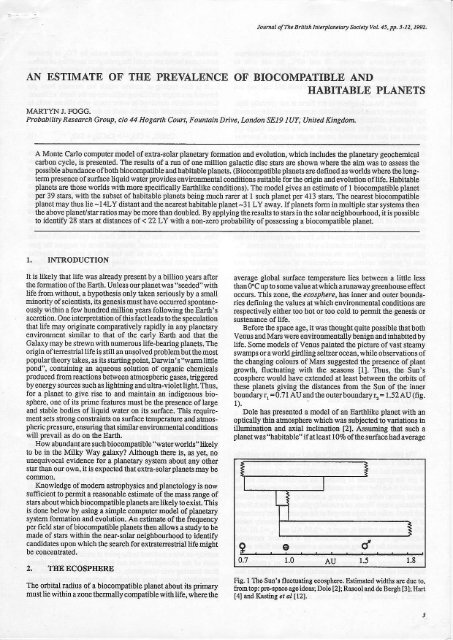
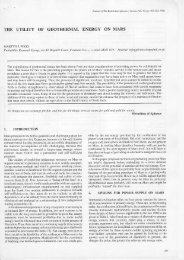
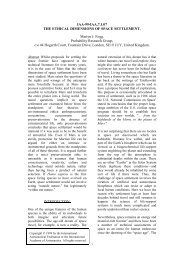
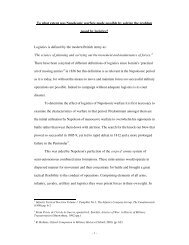

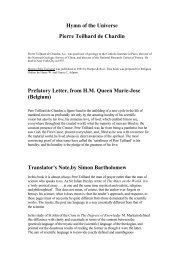
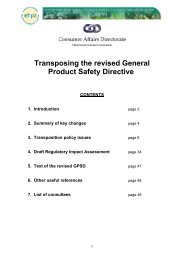
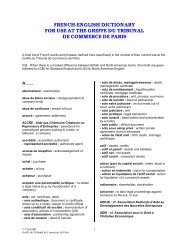
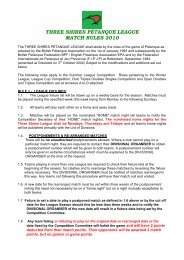
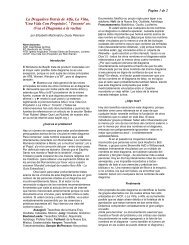

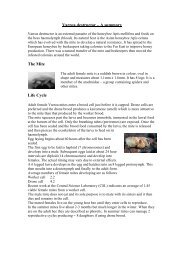

![Tibetan Herbal Medicine Core Curriculum [PDF]](https://img.yumpu.com/32594566/1/184x260/tibetan-herbal-medicine-core-curriculum-pdf.jpg?quality=85)
